Think carrying a bear canister protects your food? You’ve got it wrong: Bear canisters protect bears.
By Kelly Bastone
Thru-hikers don’t have a reputation for being the best-fed pilgrims on the trail, but when Greg “Malto” Gressel hit the Desolation Wilderness segment of the Pacific Crest Trail, his pack seemed like a cornucopia compared to other trekkers’ supplies. “Two hikers and a car-camper had their food taken by bears near Richardson Lake,” recalls Malto, who thru-hiked the PCT in 2011 and 2022. Suddenly, his dehydrated yogurt and maltodextrin drinks seemed like lavish treats compared to those hikers’ empty sacks. “I met one of them as she was hiking off-trail to resupply replacement food,” he says.
It was the thru-hiker’s version of drawing the “go directly to jail” card in Monopoly.
Those PCT hikers had hung their food in bear bags, which used to be the gold standard for backcountry food storage and continues as an oft-used technique among overnight hikers from California to Maine. Trouble is, most hikers’ technique is terrible.
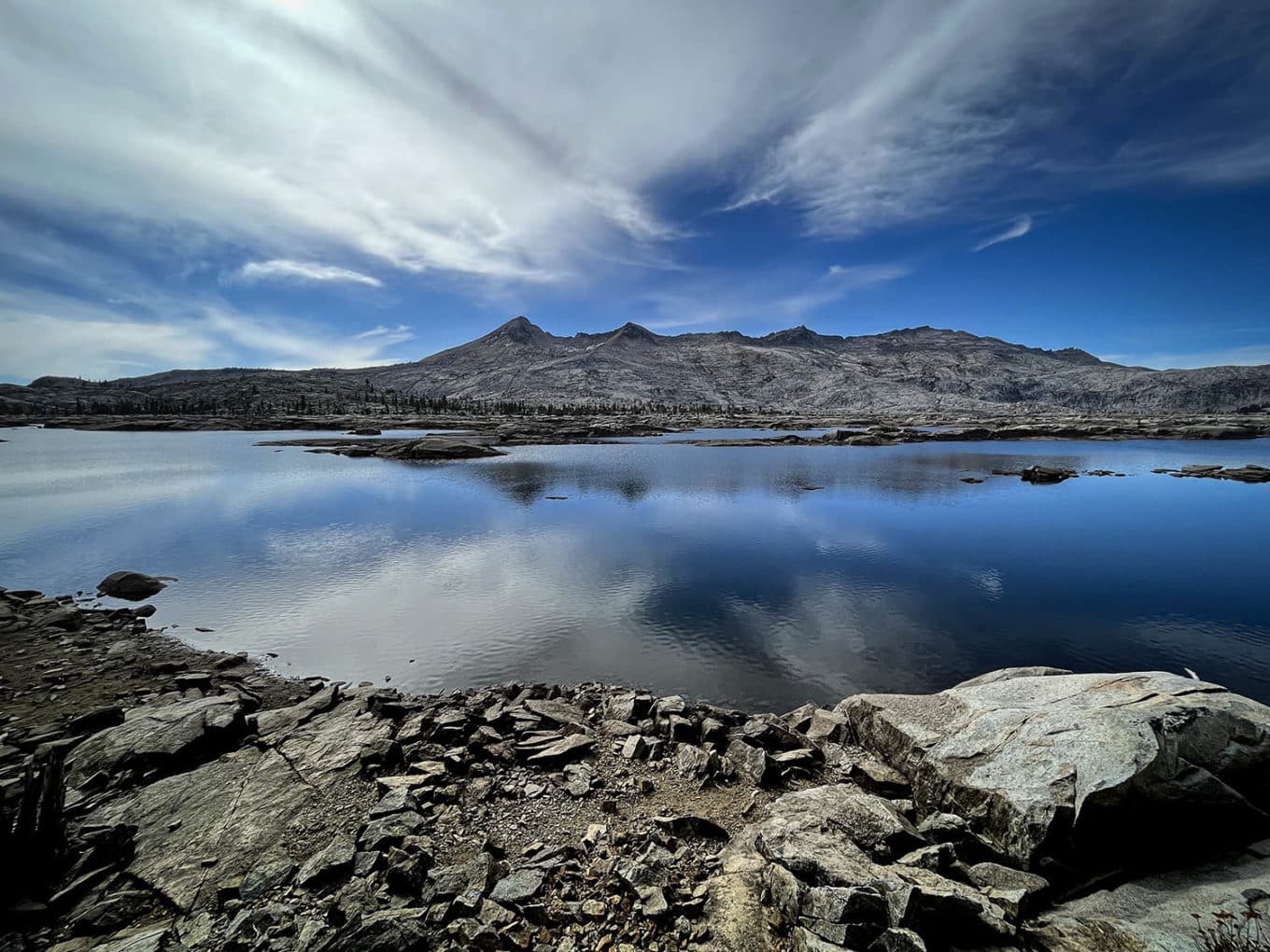
Mine certainly is. I’ll confess that when I’ve tried to hang a bear bag while backpacking near my home in northwestern Colorado, I’ve botched the job. Trees in this region lack the long, sturdy perpendicular branches required to position a bag at least 6 feet from the trunk. And trying to wrap my paracord around a rock so I could toss it over a branch reminded me that my knot-tying skills are sub-par. My web of cording looked nothing like the illustrations I tried to imitate, and usually, the rock broke loose and let my rope fall limply to the ground.
Fortunately, I live in a region that sees relatively few backpackers, so bears here haven’t learned to associate suspended bear bags with food—at least, not yet. But they probably will: Here as elsewhere, the number of backpackers is growing, and in high-traffic zones such as California’s Desolation Wilderness, the daily exposure to food-carrying hikers has trained bears to target food bags. Hikers routinely lose food.
Bears, however, can end up losing their lives.
The most sensitive sniffers in the entire animal kingdom belong to bears. Part of their advantage is size: The honeycombed lining of bears’ massive noses provides 100 times more area for scent receptors than humans have. And their brains’ oversized olfactory bulbs (responsible for processing smell) are five times larger than ours–even though the bear’s brain is two-thirds smaller. As for those bloodhounds that we admire for their keen sense of smell? Bears’ olfactory powers are seven times stronger, allowing them to detect food from miles away.
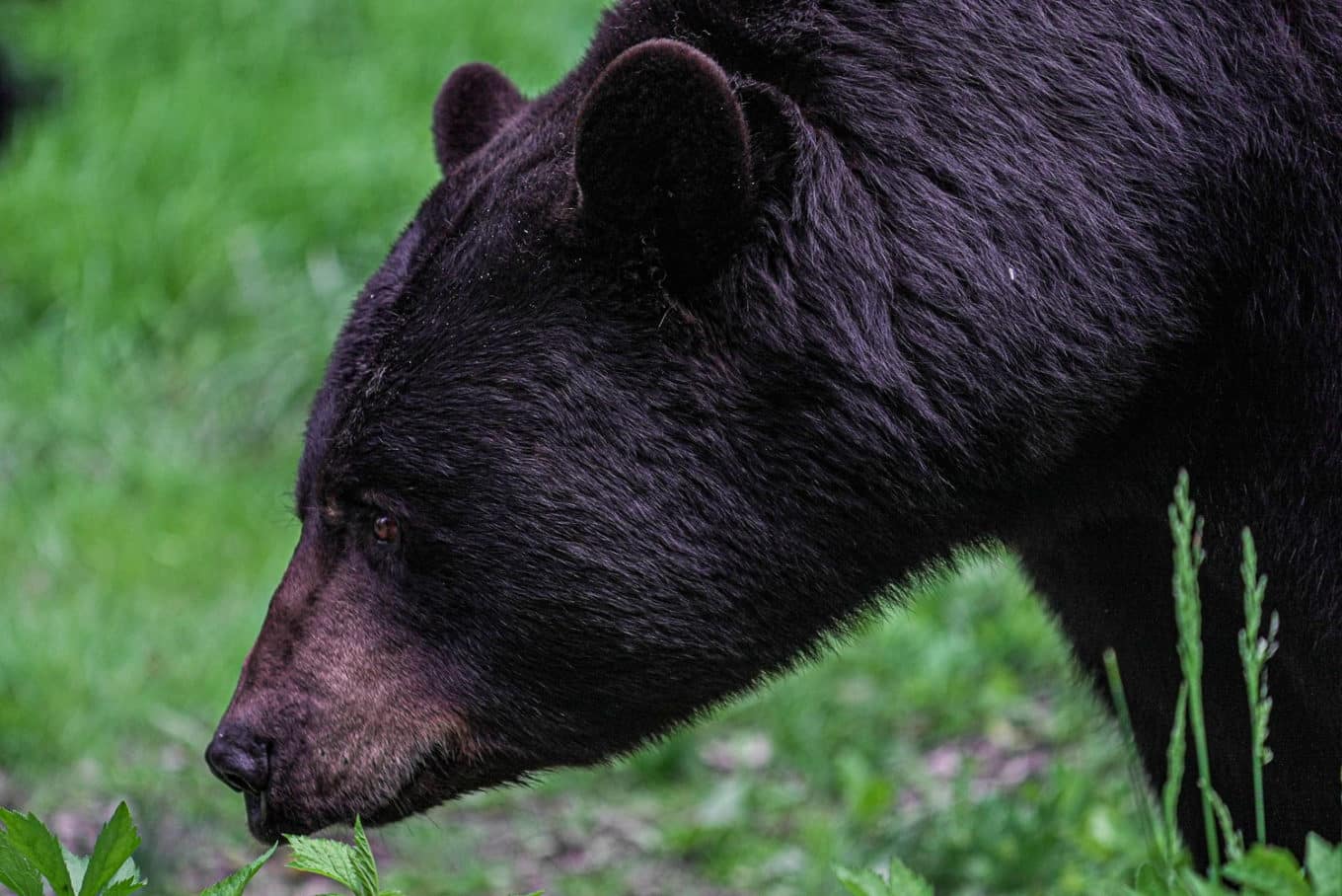
And finding food is bears’ full-time job. Not only does their hulking size (between 130 to 700 pounds) require plenty of fuel, but bears also need to store fat for hibernation. Like teenaged boys, they’re perpetually ravenous.
So to keep bears from raiding our food stores while we hike and camp through their habitat, we’ve used our clever brains to develop a system for hanging food out of bears’ reach. Most guidelines recommend placing a food bag 12 feet above the ground and six feet from the trunk. Some advice dictates 10 feet from the trunk and 15 feet off the ground.
Most people never come close to achieving those benchmarks. “After two seasons of being a Wilderness Ranger in Desolation, I have never encountered a ‘proper’ bear-hang,” says Aaron Coy of the US Forest Service in South Lake Tahoe. “Every bear-hang I’ve encountered that was made by the public was done incorrectly. It was either too close to the tree trunk, easily reachable from the ground, or otherwise useless against a hungry bear,” he continues.
“I have spent countless hours as a ranger assisting the public and fixing their bear-hangs. But I’m still not confident in the ones that I hanged. Bears are excellent climbers and a soft bag tied with a shoe-lace sized P-cord probably isn’t enough,” Coy says.
Most of the time, bears simply grab and pull the rope to retrieve the food. But Coy has also heard reports of bears climbing along branches that humans had assumed they’d never have been able to access.
Some areas, such as Great Smoky Mountain National Park, have installed cables that make it easy for campers to suspend food bags at recommended heights. But land managers in New York’s Adirondack Mountains decided to remove the bear cables near Marcy Dam (a popular camping area in the High Peaks region) after area bears learned to climb them.
But while bears display remarkable intelligence in their quest to nab human food, we humans often look like bumbling fools as we try to secure our calories. Rolf Asphaug, a volunteer ranger for Colorado’s state and local parks and a former president of Colorado Mountain Club, recalls when he was hiking a segment of California’s John Muir Trail and nearly killed himself by trying to toss a rope over a tree branch. “I’d wrapped my cord around a rock and made a huge underhand throw to lob it over a branch,” Asphaug explains. But when he looked up to follow its trajectory, Asphaug was blinded by the sun. Just as he threw his arms over his head to cushion the coming blow, he heard the rock thud into the ground, inches away from him.
“It could so easily have hit my head,” says Asphaug. “If it had, maybe my bones would still be there today.”
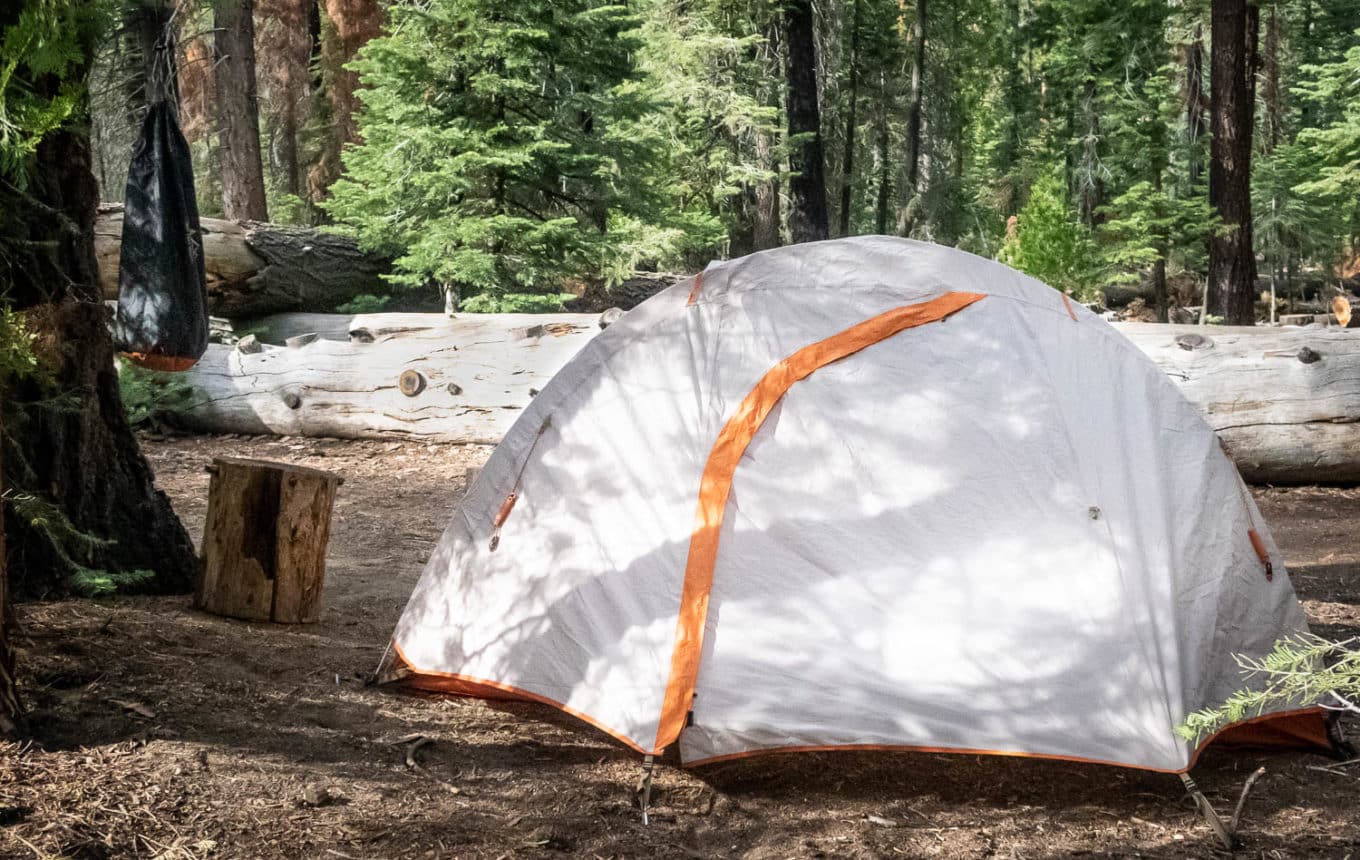
The difficulty of execution and ultimate ineffectiveness of hanging bear bags has prompted some wilderness authorities to eliminate it from their protocols. Ultralight hiking expert Andrew Skurka jettisoned the method and its instruction from his guided trips. The National Outdoor Leadership School (NOLS) has also moved away from hanging food, and developed and adopted an electric fence system that delivers a 9,000-volt bolt of electricity to deter hungry bears. The Shoshone National Forest also purchased electric fence kits that staff and the visiting public can use when camping in the Wyoming backcountry.
It might seem cruel to torment inquisitive wildlife with electric shocks. But learning to target human food leads to even bigger consequences for bears. Feeding patterns involving candy bars and peanut butter (and often their packaging) aren’t what nature designed—and such diets can have unfortunate consequences for animals’ health.
Plus, food-habituated bears get so used to targeting human treats and hangouts that they become threats to human safety. To protect people and their property, these bears are killed. From Glacier National Park to the Adirondacks, bears that learn to target human food end up dead.
“They’re just trying to survive,” says Desolation Wilderness Program Manager Don Lane.
But bears’ survival habits are changing with increased human traffic through their habitat. “When I was a ranger here in the 1970s, I spent hundreds of nights camping in the backcountry and never had any bear encounters,” says Lane. Back then, people and their food bags were too rare for bears to rely on. Now, the Lake Tahoe Basin attracts 10 million visitors every summer, with 200,000 of them trekking through the Desolation Wilderness during its brief snow-free season from July to October.
These days, Desolation’s managers estimate that as many as 10 food caches are snagged by bears every night.
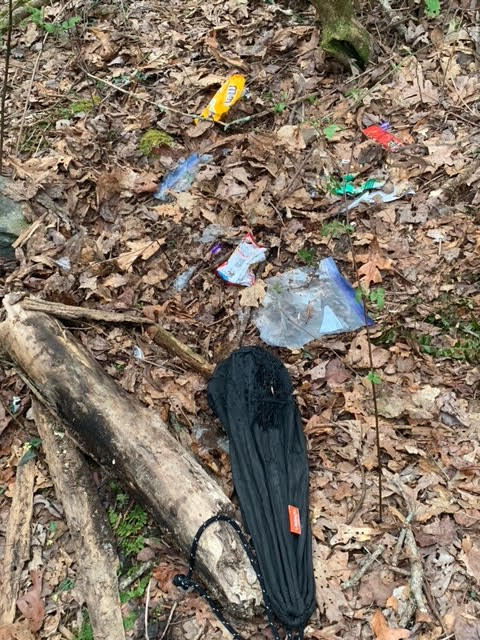
“We’ve seen an evolution of public use,” says Lane. “So we’re making an effort to educate the public to change their behavior.”
Part of that effort includes requiring hikers to use bear canisters. Desolation Wilderness started requiring them in July 2022, joining the likes of Olympic National Park, Yosemite National Park, and parts of North Carolina’s Pisgah National Forest, where bear canisters are already compulsory.
A bear canister is a burden. “It takes up a lot of room in your backpack,” acknowledges Lane. “But it’s an acknowledgement that the high country here is changing with more visitation,” he continues. “So we’re asking people to reach inside their hearts and try to comply with it.” Here’s how.
“I carry a hard-sided bear canister when it’s required by a land manager,” says ultralighter Andrew Skurka. “I trust it’s for good reason. And I think they’re the most effective food storage method out there.”
Skurka has become renowned for his weight-saving approaches to backpacking. And yet he has readily adopted the practice of securing his food in a heavier hard-sided bear canister rather than a lightweight stuff sack.
Indeed, the weight penalty of using a bear canister is unavoidable. A dyneema bag might weigh about 3 ounces, estimates longtime hiker Rolf Asphaug, but his BearVault hard-sided bear canister weighs 2 pounds. Still, Asphaug uses that BearVault where canisters are required. “Canisters are good, because bears simply cannot get into them,” he attests.
However, packing and storing food in a bear canister takes some getting used to. When making the switch from sack storage to a hard-sided canister, “Start with the backpack,” Skurka suggests. “Ideally, the bear canister can fit horizontally inside the pack, at lumbar-level and atop a sleeping bag, sleeping pad, pillow, and sleeping clothes,” he explains. That positions the canister and the weight if its contents for optimal balance (the load won’t make the backpack feel tippy) and maximum space efficiency (the horizontal position leaves more space in your pack for other items).
“If the bear canister fits only vertically, surround it with loose clothing that’s not compressed into stuff sacks,” Skurka recommends.
Loading the canister also becomes easier with a few simple hacks. Be sure to remove food from bulky packaging: If packing a box of macaroni and cheese, remove the cardboard and place the pasta in a zipper-lock bag. To reduce the volume of air that you’re storing and increase the space for actual food and other scented items, press excess air out of zipper-lock storage bags. You can also poke a pinhole into the top of packaged items to deflate their balloon-like size.
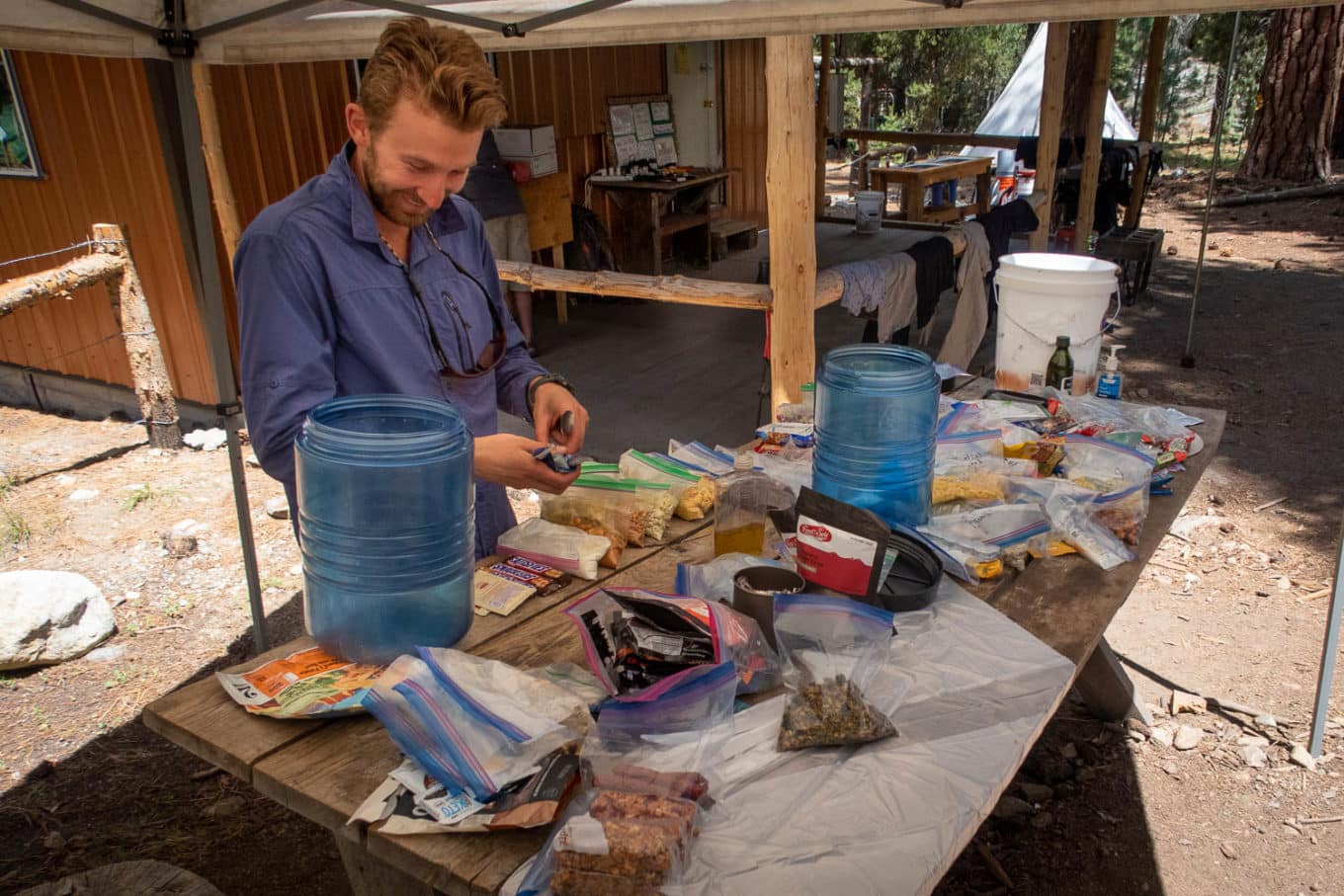
Some hikers choose flat, volume-conserving foods instead of round, bulky options (think tortillas instead of bagels). Foods such as sausages that mimic the cylindrical shape of the bear canister also maximize volume efficiency. And when packing irregularly-shaped foods like dehydrated meal pouches, nest them together so that a wide bottom end fills out another’s narrower top end.
Some hikers put a neon-colored sticker or a piece of reflective tape on their bear canister to make it easier to see from afar, or at night (it’s amazing how well bear canisters tend to blend in, visually, with the natural environment). Bear canisters become especially tricky to locate when you store them 100 feet or more from your campsite. That recommended distance ensures that if a bear does come to explore your cache, it’s led well away from your tent.
When possible, place your bear canister in an open meadow or grassy field. Avoid leaning it against a rock, because a 500-pound bear might use its body weight to crush the canister against the stone surface. Storing your bear canister near a lake or cliff is also a bad idea. Should a bear decide to play volleyball with your food, it could end up floating in water or lost at the bottom of a ravine.
Bear-resistant canisters can also be tricky for humans to open. “The credit card trick was a game-changer for me,” attests Asphaug. How-to videos demonstrating this clever trick abound.
As for the size of bear canister that best fits your needs, that choice depends on the typical length of your trips and the type of food you prefer. Freeze-dried meals are often less bulky than fresh foods, so you could get away with smaller models (such as the BV450 or BV425). If you log longer, week-long adventures or if you travel with a dog (canine food must also be stored in a bear canister) then the BV500 or the new BV475 model might be your better bet.
As with all choices of backpacking gear, your goal is to right-size the bear canister so that you’re not carrying the weight of container that’s too big. However, you do need to fit all of your trip food and scented body products inside—because storing excess in a supplemental soft-sided bag defeats the whole purpose of carrying a bear canister in the first place.
“The goal is to reduce encounters with bears,” says Lane. To do that, he maintains, hikers need to consistently use bear canisters. Over time, that canister-using habit is likely to train bears into new habits—just as food bags did.
When I asked wildlife managers at Yellowstone National Park about backpackers’ encounters with bears that become food pirates, I discovered something astonishing: There are none.
“We have over 4 million visits per year and over 40,000 backcountry use nights here, but we have almost no bear-human conflicts,” says Kerry Gunther, Bear Management Biologist for Yellowstone National Park.
That’s because Yellowstone uses a system of designated backcountry campsites with food storage devices (often lockers) at each site in addition to recommending hard-sided canisters for more remote areas. “We get very good compliance with our food storage order,” says Gunther.
That’s a promising vision for what might happen should bear canisters become constantly and consistently adopted wherever they’re currently required—and maybe even where they aren’t.
The PCTA recommends that thru-hikers carry a bear canister for the entire length of their trip, and not only where they’re strictly mandated. “Remember, it’s not about protecting your food from wildlife. It’s about protecting wildlife from your food,” says Jack “Found” Haskel, Trail Information Manager for the PCTA. “Animals can’t resist the food you have in your pack. Faced with a choice between eating grass or many thousands of calories of hiker food, they’re compelled to do everything they can to get your food.”
But just as animals can learn to target human food, they can also learn that familiar forms of bear-resistant storage—such as bear canisters—aren’t worth their trouble and energy. That’s what Yellowstone’s bears have come to understand. And bears in other regions of the US may eventually form similar habits of avoidance if they see bear canisters often and consistently.
“We do still get reports of bears messing with canisters,” says Don Lane of the Desolation Wilderness, which just completed its first summer with bear canister requirements. For a while, hiker food may remain a target for bears there. However, continues Lane, “We’ve seen the evolution of bear intelligence. When they consistently don’t succeed, they will seek alternatives, and will return to natural food sources.”
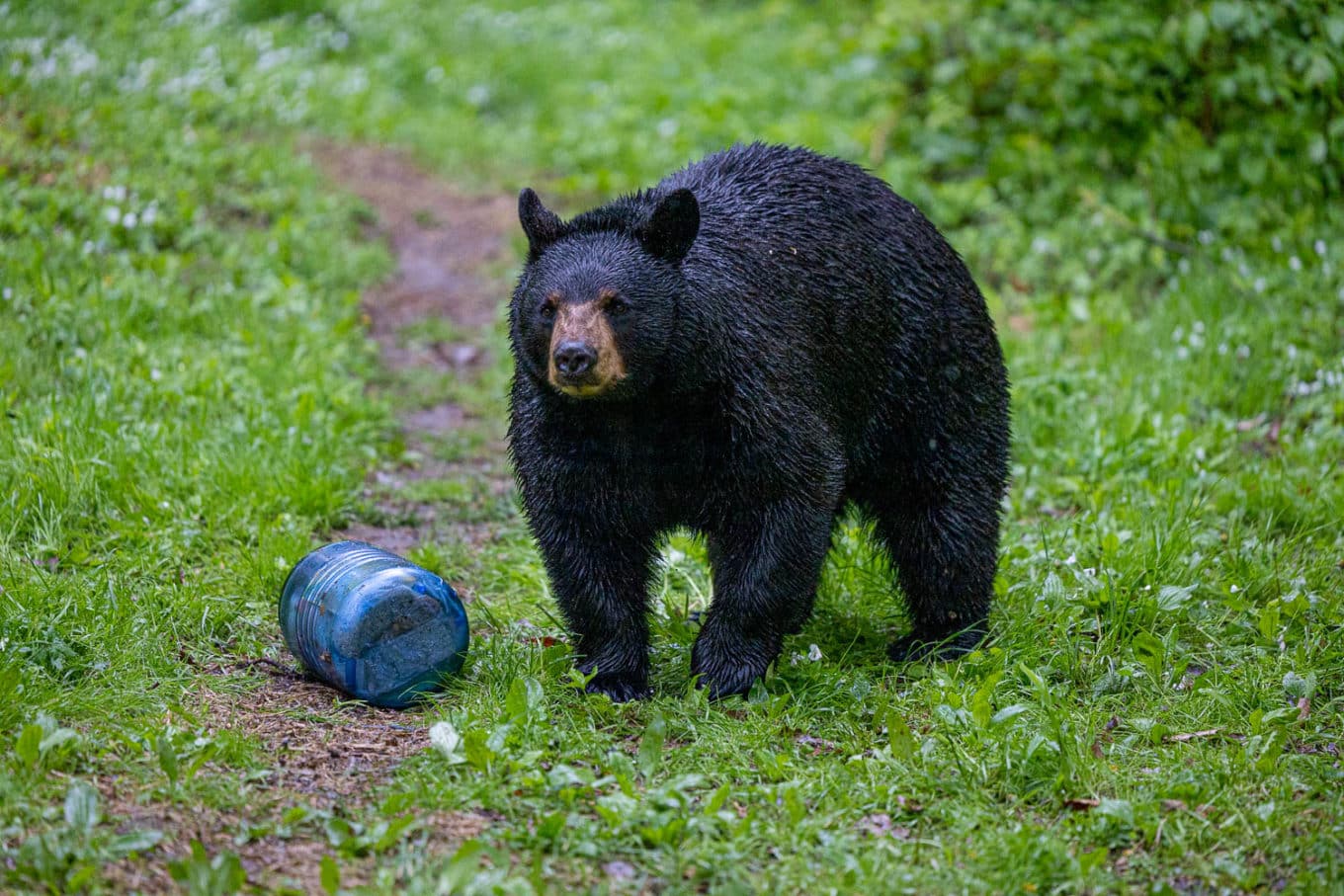
That pattern is likely to keep bear populations healthy—and alive.
Knowing this, I feel compelled to re-evaluate my own food-storage practices in the backcountry. Hikers here haven’t yet trained area bears to hunt down our food sacks. But should we wait until we’ve established a problem to adopt best practices? That places us behind the curve, when by carrying bear canisters now, we could reinforce natural processes before they fall apart.
“We need to learn to live with each other,” Lane reminded me. Bears already make a lot of accommodation for human traffic, campsites, roads and cities. For me to carry a two-pound canister seems like a small and reasonable concession to preserve bears’ presence in the big, rich wild places that I love.
Introducing the BearVault bear canister, made to protect your food and keep your adventure going with no disruption from wild animals. Our bear canisters are intentionally designed and well engineered to keep bears from accessing your hiking food so it can all be available to fuel your body as it is challenged by your hike.
Spending time in nature is good for the soul. Breathing in the fresh air, hearing the wind rustle through the leaves, and feeling the sun on your skin is the best medicine. But, all those amazing outdoor vibes go flying right out the “front door” of your amazing hiking trip if a bear steals your food.
The BearVault was an invention of necessity. While on a backpacking trip with friends the discussion around the fire centered on the backpacking bear canister we were using. It had some challenges with shape, had a small opening, was quite heavy, and had very limited visual accessibility. All of these things added up made it our least favorite piece of equipment overall. Naturally the brainstorming was sparked, and reimagining the bear can began.
Today our bear can design is a result of several prototype iterations. We have addressed so many of the issues we had with the original can that started the conversation in the first place:
It’s helpful when human hands of all sizes can fit into the bear can to rummage about at will. Our design has eliminated having to dump out the entire contents of your bear canister because your hand doesn’t fit through the opening.
Having an easy to see into bear canister that doesn't require you to empty the contents of the bear can to find specific items is a huge differentiation of the BearVault products.
Assist in strapping and packing your small bear canister to the top of your pack. The ideal place for your bear can is inside your pack just above your sleeping bag, however if that is not going to work you can safely secure the canister in several ways with our guides.
Intuitive, secure, and not requiring extra tools to operate is major plus for our lid. Not having to keep track of any tools makes the whole bear canister system completely integrated with nothing to misplace. See our helpful video on how to properly open and close your bear resistant food canister.
Our BearVault models are approved by both the Sierra Interagency Black Bear Group and Interagency Grizzly Bear Committee.
We made it lighter but with higher volume, thanks to the durable, polycarbonate construction. This helps to offset the added pounds that adding bear protection to your packing routine can add.
Specifically designed to be wide, round and slippery, reducing leverage points for entry from bear jaws, claws and paws. This is the most durable and reliable shape for a bear resistant food canister. The fewer the corners the better.
You’ve most likely heard that there are two food storage philosophies. Hanging your food or using a bear canister. There is a third approach that we absolutely do not recommend, which is keeping your food in your tent. The third approach might have worked for you every time up until now, but it only takes one time for it to fail you and it could cost more than you bargained for.
We obviously subscribe to using a bear food canister and here is why:
Even if you do find the “perfect tree” bears are expert climbers and can move up and down trunks and branches with confidence and agility. Often adult bears will send their cubs to pull down the food and they will even venture up themselves.
Bears notoriously debunk food hung from trees. Once a bear has encountered human food it is insatiably searching for it and it’s wild behavior changes to habituated behavior placing it in danger of hurting someone or being put down. There is no way to overstate that a fed bear is a dead bear. Please do not feed animals human food.
This is a real issue, oftentimes trees are too small, too tall, or just not around. Then what? Can it!
Branches and boughs are overused, becoming weak and eventually breaking off in well used and high traffic camping areas. Bark is worn off and dug into from ropes and limbs are climbed on or over burdened with loads too heavy for their weight capacity.
If a perfect tree is actually available there are still very few people that can execute a proper hang every single time. Issues with tying rope, the height of the hang, how close the bag is to the trunk of the tree, and more prevail over and over again when observing a bear hang in the wild. It is harder than it looks and it is even more exposed to being invaded if done improperly.
You can open and close your BearVault bear canister as many times as you want with no disruption before you stash it away for the night. Forgot your toothpaste? Need one last bite of chocolate? Found some chapstick in your pocket that you forgot to throw in your food bag? You don’t have to untie your entire food hang system in the dark to get to your food and scented items.
Be sure to visit our Tips, Care & FAQ’s page to get a really good understanding of how to open and close your bear resistant canister, how to properly pack it into your backpack, how to handle it when you are at camp for the night, how to use it when you are cooking and cleaning, and how to stash it properly at night.
A few things to remember about your bear canister
Don’t just take our word for it. We have hundreds of happy customers who have seen our approved bear canister in action. Here are a few reviews from our customers:
Keep your food yours with a bear canister so you can keep your adventure going. Whether backpacking or camping, you can calm the nagging problem of keeping your food available when you need it and safe from the paws of bears by using a BearVault. Our backpacking bear canister is easy to carry, clean, and integrates easily into your packing routine. Keep your adventure going without worrying about nature snacking on your food (or you).